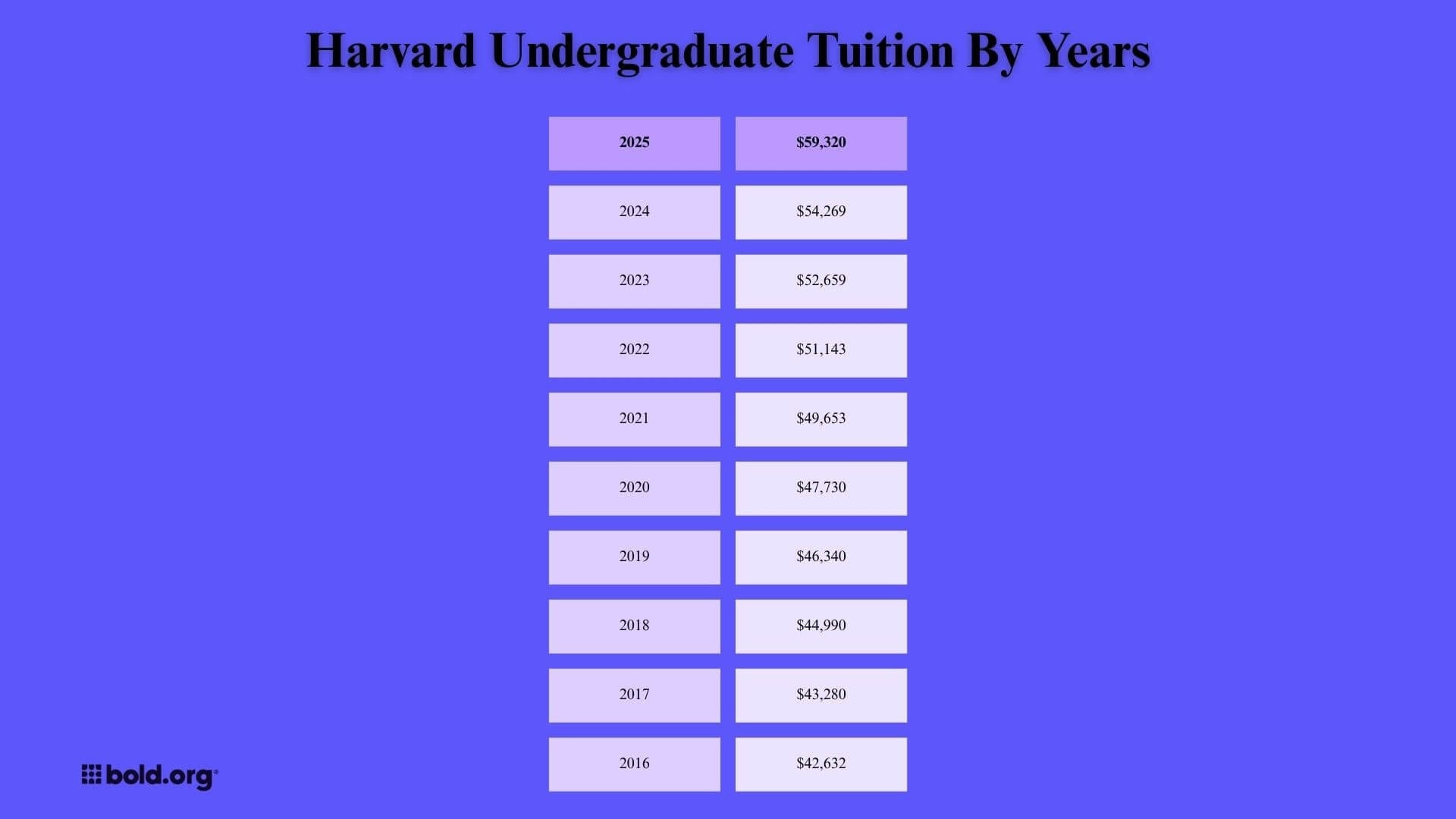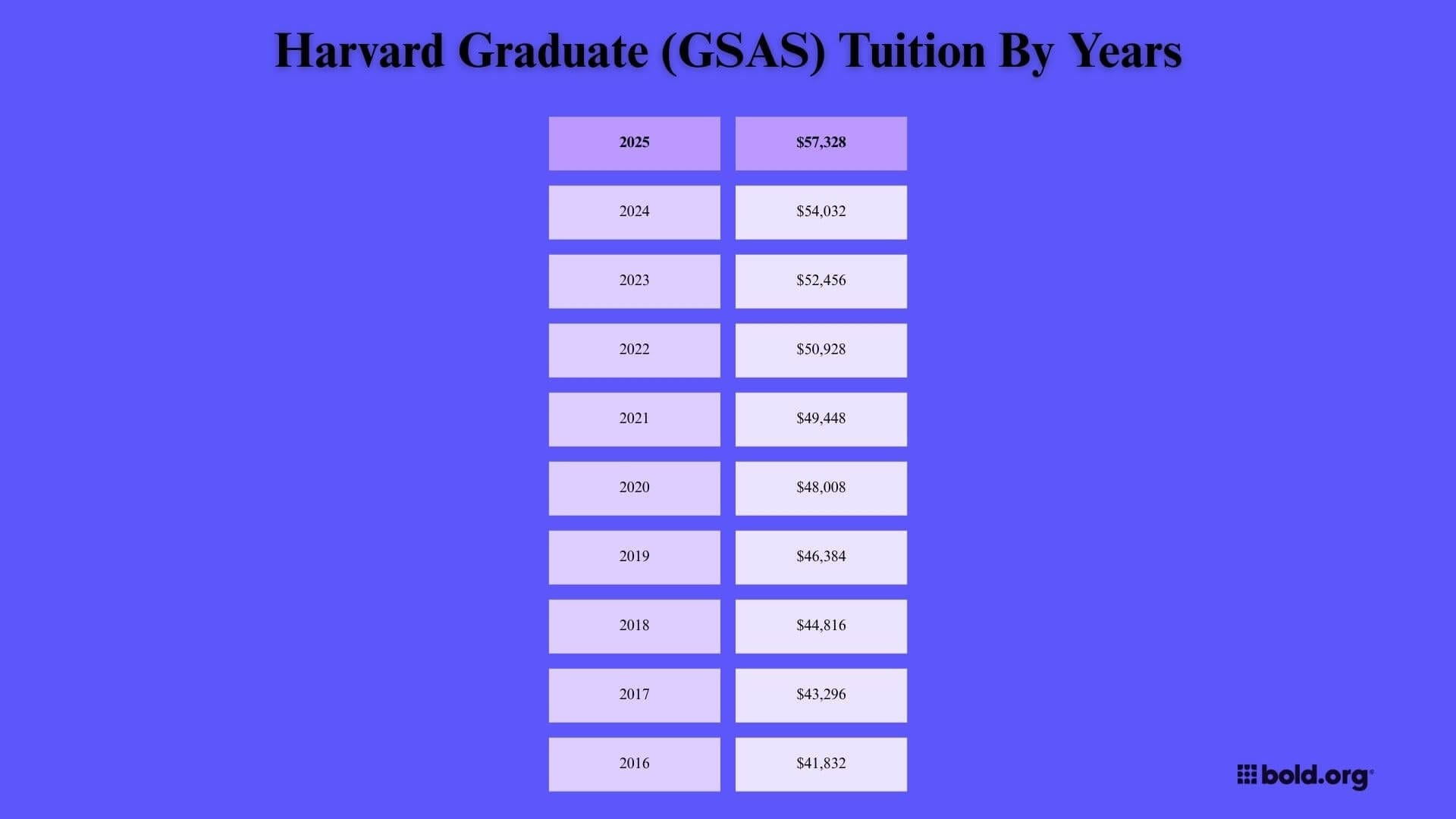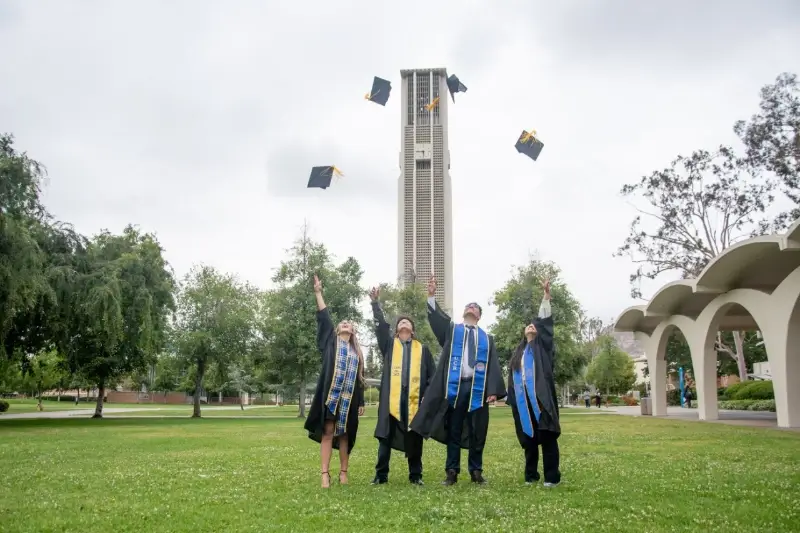Harvard Tuition


Harvard—the name alone intimidates even the most brilliant of students. Between the ivy-covered buildings and competitive culture, Harvard University has a unique mythos unlike any other school. But behind the intrigue and intense admissions process, there's something else that makes students double-take: the cost of tuition.
As a Columbia University graduate, I'm familiar with the costs of an Ivy League degree. Take it from me: you don't want to miss out on financial aid from your school if you're eligible. University aid packages make things so much easier, but it's important to know what your school does and doesn't offer.
That's why I've gathered as much information as possible that breaks down the massive financial opportunity Harvard provides their students, including:
- Insight into Harvard's tuition history
- How Harvard tuition works
- What factors contribute to Harvard's tuition
- How to pay for Harvard
While Harvard might earn you a world-class education, it also has the potential to leave you drowning in student loan bills if you're not aware of how Harvard can work for you. And as a graduate student, I know how heavily loans can weigh on you. However, believe it or not, Harvard's tuition policies aim to keep students debt-free, and I'm here to tell you how.
So, if you're an Ivy League dreamer seeking intellectual and personal growth, don't let Harvard's reputation intimidate you. Let’s go ahead and dive right into the dollars and sense behind one of the most talked-about financial aid systems in higher education.
Create a Bold.org profile and apply for scholarships today to attend college with as little debt as possible!
Get Matched to Thousands of Scholarships
Create your Bold.org profile to access thousands of exclusive scholarships, available only on Bold.org.
Create Free ProfileCost of Attendance at Harvard University
For the 2024-2025 academic year, Harvard's annual cost of attendance was $79,540. The cost of attendance is broken down into different aspects:
- Tuition: For example, the base tuition for the 2024-2025 academic year was $53,968; for 2025-2026 it's $57,328. This fee covers the cost of instruction, access to university resources, and academic support services. This price is for the cost of tuition and tuition only.
- Housing: Students are required to live on campus for their first two years at Harvard. This includes a room in one of Harvard's residential dorms, food, and other expenses like internet and utilities.
- Health and Student Services: Harvard also offers health insurance and other costs for activities and support services, such as access to libraries and campus events.
- Personal Expenses: Students are also expected to budget for personal expenses, such as clothing, travel, and leisure.
- Travel Costs: If a student is moving to Harvard from outside the United States or from another state, travel expenses will be paid for.
Recommended: How to Get a Harvard Scholarship

The Harvard Endowment
In 2024, Harvard's long-established endowment reached a staggering $53.2 billion, allowing the university to provide significant financial aid coverage to their students. Over 55% of their undergraduate students received some form of financial aid, with the average award covering the average annual tuition for an undergraduate student at Harvard. With this endowment, Harvard University will continue to live up to its mission to bring in the best students regardless of their financial situation.
Visit our blog to read more on Harvard scholarship policies.
Financial Aid at Harvard
Paying for a college education has gradually become one of the biggest concerns in the United States. However, Harvard’s financial aid program is designed to ensure full inclusion in the Harvard experience for students with minimal constraints.
Harvard undergraduate students, or those admitted into Harvard College (the undergrad liberal arts school), can expect their financial aid package to abide by the following stipulations.
Create Your Free Profile to Apply for Scholarships Today!How it Works:
Harvard University’s financial support is based on two major principles:
- Need-blind admissions: The financial need and aid application will never affect your chance of being admitted to Harvard.
- 100% need-based aid: Harvard awards aid based on need, not merit. This means that financial aid supports the students who will benefit from it the most.
Harvard University will cover up to 100% of tuition and costs for students who demonstrate financial need. However, it's important to remember that Harvard covers only what it believes is necessary. Your family's income will largely determine how much aid you'll get.

Harvard University's need-based financial aid system is broken down into three measurements:
- Free: For students with a $100,000 family income and below and typical assets, Harvard's financial aid will cover tuition, fees, food, housing, and more. This includes a $2,000 start-up grant for first-year students, health insurance (if needed), travel costs between campus and home, winter gear, event fees, and other activities, as well as a $2,000 launch grant for junior-year students to help them prepare for post-Harvard life.
- Tuition-Free Plus: For students with a $200,000 family income and below, with typical assets, financial aid will cover the full cost of tuition. In addition to tuition, students can qualify for financial aid to cover additional costs, such as other fees, food, and housing, based on their individual financial circumstances.
- Tailored Financial Aid: For students with a $200,000 family income and above, with typical assets, financial aid such as scholarship funds will be available to students depending on individual circumstances.
Please note: Typical assets do not include equity in the family home or retirement assets. They are based on a typical U.S. cost of living and taxes. Students are expected to cover $3,500 in personal expenses per academic year, usually through work-study hours.
For more financial resources, browse through hundreds of Bold's exclusive scholarships.
Here is a breakdown of Harvard University's tuition over the last decade, including the upcoming 2025-2026 academic school year, for both undergraduate and graduate students :


Factors That Influence Harvard's Tuition Fees
As one of the leading academic institutions in the world, Harvard's tuition and fees are influenced by three main factors. Let's explore these in more detail:
1. Inflation and Cost of Living
Like most universities, Harvard adjusts its tuition each year to keep up with inflation and the rising cost of living. However, Harvard’s tuition increases are typically lower than those of many private universities, reflecting the university's commitment to ensuring that cost is not a barrier to education.
2. Demand for Education
Harvard University is one of the most selective universities in the world, with an acceptance rate of just 4.9% in 2024. The high demand for a Harvard education contributes to its ability to charge higher tuition fees.
3. Financial Aid
While Harvard’s tuition is expensive, the university provides generous financial aid packages to help students cover costs. Harvard uses a need-blind admissions policy. This means a student's financial situation is not considered during admissions. This policy ensures that all students, regardless of their financial background, are given the same opportunities.
Use our scholarship search feature to browse through exclusive financial opportunities today!
Harvard Financial Aid Initiative
In 2004, Harvard launched the Harvard Financial Aid Initiative (HFAI), a recruitment program that serves as a resource for students looking to learn more about the application and financial aid process. The HFAI is committed to making sure all admitted students have the opportunity to attend Harvard andraise awareness of college affordability for students interested in receiving a higher education.

Ways to Pay for Harvard University
Harvard’s financial aid program is designed to meet the full demonstrated need of all admitted students; however, in the case that you need extra aid, here are other financial resources to consider:
- Scholarships: These can be awarded by schools and other organizations based on students’ academic excellence, athletic achievement, community involvement, job experience, field of study, or financial need.
If you're headed to college, take a look at the best scholarships for high school seniors for 2025.
- Work Study: Harvard offers students opportunities for the work-study program, which allows students to take on part-time jobs to help cover their personal expenses. These jobs are usually around campus and are designed to be flexible, allowing students to work around their academic schedules.
- Grants: Unlike many universities that include loans as part of financial aid packages, Harvard's financial aid program eliminates loans entirely for families with annual incomes below $200,000. Instead, students receive grants and work-study opportunities. This approach is a huge advantage for students seeking to avoid the financial strain that often accompanies higher education.
- Federal Student Aid: This is money borrowed directly from the U.S. Department of Education. It comes with fixed interest rates that are typically lower than private loans.
Harvard's Tuition History
Founded in 1636, Harvard University initially operated under a vastly different economic model than today. In its early years, tuition and fees were often paid through barter or through work arrangements. As the years progressed, so did the tuition costs. Here is a brief timeline:
- 1930, $400 a year
- 1947, $525 a year
- 1949, $600 a year
- 1953, $800 a year
- 1960, $1,520 a year
- 1975, $5,350 a year
By the late 21st century, Harvard’s tuition continued to increase significantly, reaching $47,730 annually by 2020 for undergraduate tuition. Though prices have reached all-time highs, Harvard continues to stay true to their mission by serving the world’s most ambitious scholars through its generous financial aid programs, with more than half of undergraduates receiving need-based aid.
In fact, approximately 55% of Harvard students receive scholarship aid. However, even with the promise of financial aid, the reality of paying for a Harvard education can still be overwhelming for many families.
Read our guide on admissions timelines and when Ivy Day is if you're putting Harvard on your common app!

Frequently Asked Questions About Harvard Tuition
How much does it cost to attend Harvard University?
Attending Harvard will cost you a pretty penny. For the upcoming 2025–2026 academic year, the cost of attendance was approximately $86,926 a year for undergraduate students. This includes tuition = $59,320, housing = $13,532, food = $8,598, student services = $8,598, and health services = $1,800. However, Harvard has a very generous financial aid program that provides need-based aid to qualifying students. In other words, the actual cost depends heavily on your family’s financial situation. Refer to the article above on how their tuition policy works for you!
How do I get free tuition at Harvard?
Harvard University is known for its very generous financial aid programs, which are all need-based and dependent on family income. Students whose families make less than $100,000 are offered free tuition.
Does Harvard offer merit-based scholarships?
No, Harvard does not offer merit-based scholarships. Harvard's financial aid is need-based, meaning Harvard covers what your family cannot afford.
Bold.org is committed to the fight against student debt. Visit our Blog to stay in-the-know about standardized tests, college admissions, and staying debt-free throughout your education.